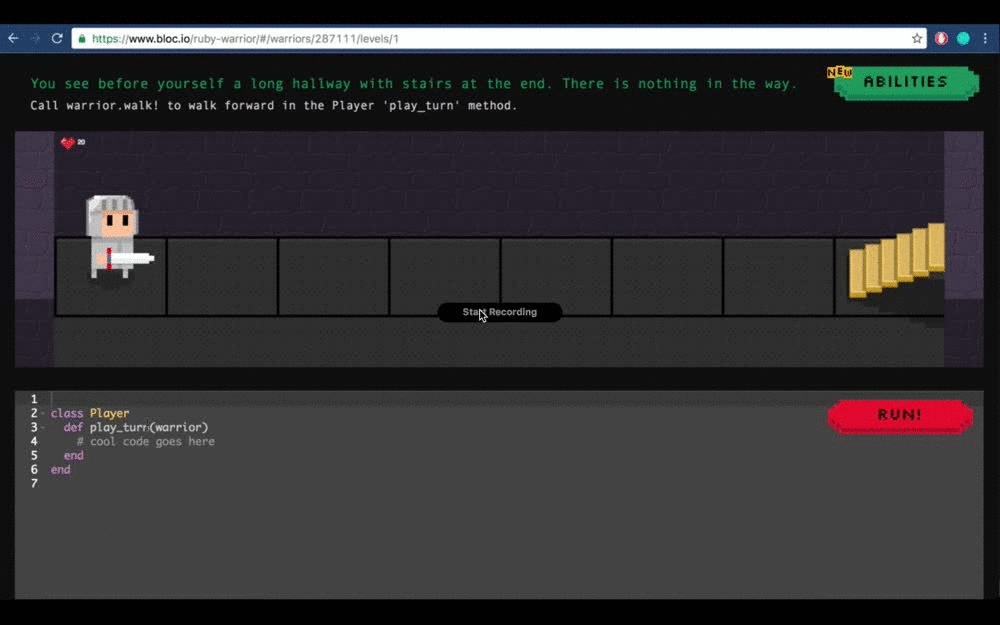Develop with ease
Topalov Alex 2017
Test Example
Ruby Warrior


Intro
Part 1. Algorithmic Complexity
Flog

Reek

Flay
Code duplications


Churn

LOC/NOC

Cyclomatic complexity
Saikuro, RuboCop


RuboCop

Security
Bundler Audit, Brakeman. *nix security



Where to?
1. CodeClimate
2. MetricFu


How to?
1. SOLID
2. Patterns
3. Refactoring
SRP
(Single responsibility principle)

SRP
(Single responsibility principle)

SRP
(Single responsibility principle)


OCP
(Open/Closed principle)

OCP
(Open/Closed principle)

LSP
(Liskov substitution principle)

LSP
(Liskov substitution principle)


LSP
(Liskov substitution principle)

ISP
(Interface segregation principle)

ISP
(Interface segregation principle)

ISP
(Interface segregation principle)

DIP
(Dependency invertion principle)

DIP
(Dependency invertion principle)

Part 2. Tests
Code/Test Coverage


Mutator
(ex Heckle)

How to?
- F.I.R.S.T
- Refactoring
F - Fast
- A developer should not hesitate to run the tests as they are slow.
- All of these including setup, the actual test and tear down should execute really fast (milliseconds) as you may have thousands of tests in your entire project.
I - Isolated/Independent
- Arrange.
- Act.
- Assert.
- Avoid doing asserts in the Arrange part, let it throw exceptions and your test will still fail.
- No order-of-run dependency. They should pass or fail the same way in suite or when run individually.
- Do not do any more actions after the assert statement(s), preferably single logical assert.
R - Repeatable
- A test method should NOT depend on any data in the environment/instance in which it is running or state.
- Deterministic results.
No dependency on date/time or random functions output. - Each test should setup or arrange it's own data.
Use Data Helper classes/Factories/Fabricators that can setup this data for re-usability.
S - Self-Validating
- No manual inspection required to check whether the test has passed or failed.
T - Thorough and Timely
- Should cover every use case scenario and NOT just aim for 100% coverage.
- Should try to aim for Test Driven Development (TDD) so that code does not need re-factoring later.
Part 3. Non-algorithmic Complexity
Learning Curve

Business requirements
Business requirements
We need a sales report
Business requirements
We need a sales report...
Can we have a date range there
Business requirements
We need a sales report...
Can we have a date range there...
We also need COGS to be present
Business requirements
We need a sales report...
Can we have a date range there...
We also need COGS to be present...
Can we exclude fraud/non-verified customers
Business requirements
We need a sales report...
Can we have a date range there...
We also need COGS to be present...
Can we exclude fraud/non-verified customers...
Is there are a way to see sales from new and returning customers?
Business requirements
We need a sales report...
Can we have a date range there...
We also need COGS to be present...
Can we exclude fraud/non-verified customers...
Is there are a way to see sales from new and returning customers?
Can we also have sales for shipped orders?
Business requirements
We need a sales report...
Can we have a date range there...
We also need COGS to be present...
Can we exclude fraud/non-verified customers...
Is there are a way to see sales from new and returning customers?
Can we also have sales for shipped orders?

Further reading:
- 99 Bottles. Good for LSP understanding. Sandi Metz.
- Principles, Patterns, and Practices. Robert Martin(a. k. a. Uncle Bob)
- Integration Tests are a Scam. Joe Rainsberger
- Refactoring from Good to Great. Ben Orenstein
- Refactoring(https://refactoring.guru/). Martin Fowler
